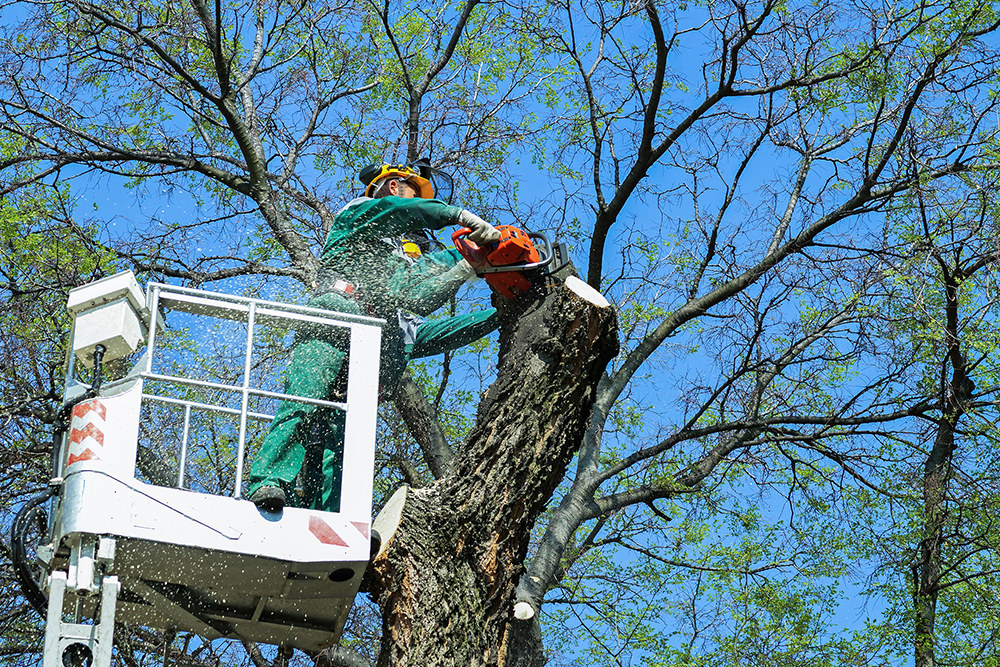What Is Vegetation Management And Why Is It Important?

Vegetation management refers to the strategic control of unwanted plant growth, guaranteeing that it does not interfere with essential infrastructure or pose safety risks. From controlling weeds to managing overgrown trees, this practice plays a key role in protecting power lines, railways, and other critical systems from the dangers posed by unmanaged vegetation.
The Importance of Vegetation Management
Proper management is about much more than aesthetics. While maintaining a neat landscape is valuable, the primary goal is safety and reliability, particularly when it comes to infrastructure like power lines, railways, and industrial sites. Unchecked vegetation can disrupt services, damage property, and even cause serious hazards such as fires.
For instance, overgrown trees that come into contact with power lines can cause outages, and in more severe cases, start fires. The California wildfires of recent years are a tragic example of how inadequate vegetation control can result in catastrophic events. Managing plant growth around power lines and other vulnerable systems significantly reduces these risks, protecting not only the infrastructure but also the communities that rely on these services.
How Vegetation Management Protects Infrastructure
This directly contributes to the safety and functionality of various types of infrastructure:
- Power Lines: Trees growing too close to power lines are a significant concern for utility companies. In strong winds or storms, these trees can break and fall onto lines, causing outages or sparking fires. Regular maintenance, such as trimming trees or removing hazardous ones, helps mitigate this risk.
- Railways: Managing vegetation is also necessary along railway tracks. Overgrown plants and trees can obstruct visibility or fall onto the tracks, causing delays or accidents. Clearing brush and maintaining tree lines makes sure that the railway system remains operational and safe for passengers and freight.
- Roads and Industrial Sites: At industrial locations and along highways, overgrown vegetation can reduce visibility, block signage, or interfere with key equipment. Effective vegetation control prevents these issues, allowing these spaces to operate efficiently and safely.
Techniques in Vegetation Management
Various methods are employed to control unwanted vegetation, tailored to the needs of the infrastructure and the surrounding environment. These methods range from manual removal to chemical treatments, each with its own set of advantages based on the specific requirements of the area.
- Manual and Mechanical Removal: This includes pruning, trimming, or removing entire trees and bushes. In high-risk areas, such as those near power lines, managing vegetation often involves directional pruning, which encourages growth away from critical infrastructure without damaging the tree’s structure.
- Brush Removal: Brush, or low-lying vegetation, poses a significant fire risk, particularly in dry regions prone to wildfires. Brush removal not only protects infrastructure but also minimizes fire hazards that can affect entire communities. Clearing this vegetation improves access for maintenance crews and provides clearer sightlines for security purposes.
- Herbicides: Chemical treatments can be used to target invasive plants or persistent weeds that threaten infrastructure. Herbicides are carefully applied to prevent overgrowth without harming the environment. In cases where manual removal is too costly or time-consuming, herbicides provide an efficient alternative.
- Tree Growth Regulators (TGRs): A newer method in vegetation management involves the use of tree growth regulators. These are chemicals applied to slow the growth of trees, reducing the need for frequent trimming, or pruning near power lines or other infrastructure. TGRs work by altering the tree’s growth process, making them a cost-effective and sustainable solution in areas where manual removal is challenging.
Long-Term Benefits of Vegetation Management
- Reduced Risk of Fires
In wildfire-prone regions like California, effective vegetation management plays a critical role in reducing fire risks. By removing dead or dry brush, which can easily ignite and spread fire, the potential fuel source is minimized. Additionally, managing tree growth near power lines helps prevent sparks from triggering dangerous wildfires. This proactive approach not only protects property and infrastructure but also reduces the likelihood of devastating fire outbreaks.
- Improved Infrastructure Reliability
Consistent vegetation management helps protect power lines, railways, and other infrastructure from damage caused by falling branches or overgrown plants. By maintaining clear areas around these critical systems, the risk of service interruptions is significantly reduced, leading to fewer outages and lower repair costs in the long run.
- Enhanced Safety for Communities
For residents and businesses located near critical infrastructure, this type of management can mean the difference between a safe environment and one with hidden hazards. In addition to preventing outages or fire risks, managing plant growth around buildings and public spaces prevents injuries from falling branches or obstructed views.
Using Geospatial Technology in Vegetation Management
Advances in technology have made it easier and more efficient to manage vegetation on a large scale. Geospatial tools, such as satellite imagery and drones, can now be used to monitor vegetation growth over vast areas, identifying problem spots before they become serious. This data-driven approach allows for more targeted interventions, reducing the need for costly and time-consuming manual inspections.
With these advancements, managing vegetation becomes not only more efficient but also more precise, guaranteeing that resources are used effectively. Technologies like these are especially beneficial for managing large infrastructure systems like utility corridors, where vegetation must be monitored continuously to prevent disruptions.
Vegetation management is an essential practice for safeguarding infrastructure and minimizing risks to public safety. By controlling the growth of trees, brush, and other plants near power lines, railways, and industrial sites, we can prevent damage, reduce fire hazards, and make sure the continued reliability of critical services.
At Coleman Environmental Engineering, LLC, we bring together decades of experience and the latest in cutting-edge technology to deliver comprehensive vegetation management solutions. Our approach is customized for each site, guaranteeing that we address specific needs while promoting safety and sustainability.
Whether through manual tree cutting, fire restoration, or the use of advanced geospatial monitoring tools, we carefully design our services to protect both your property and the surrounding environment. Our team is committed to using environmentally friendly methods while minimizing risk and enhancing land management practices. Explore our environment engineering projects to see how we can help you achieve your land management goals while safeguarding natural resources.

